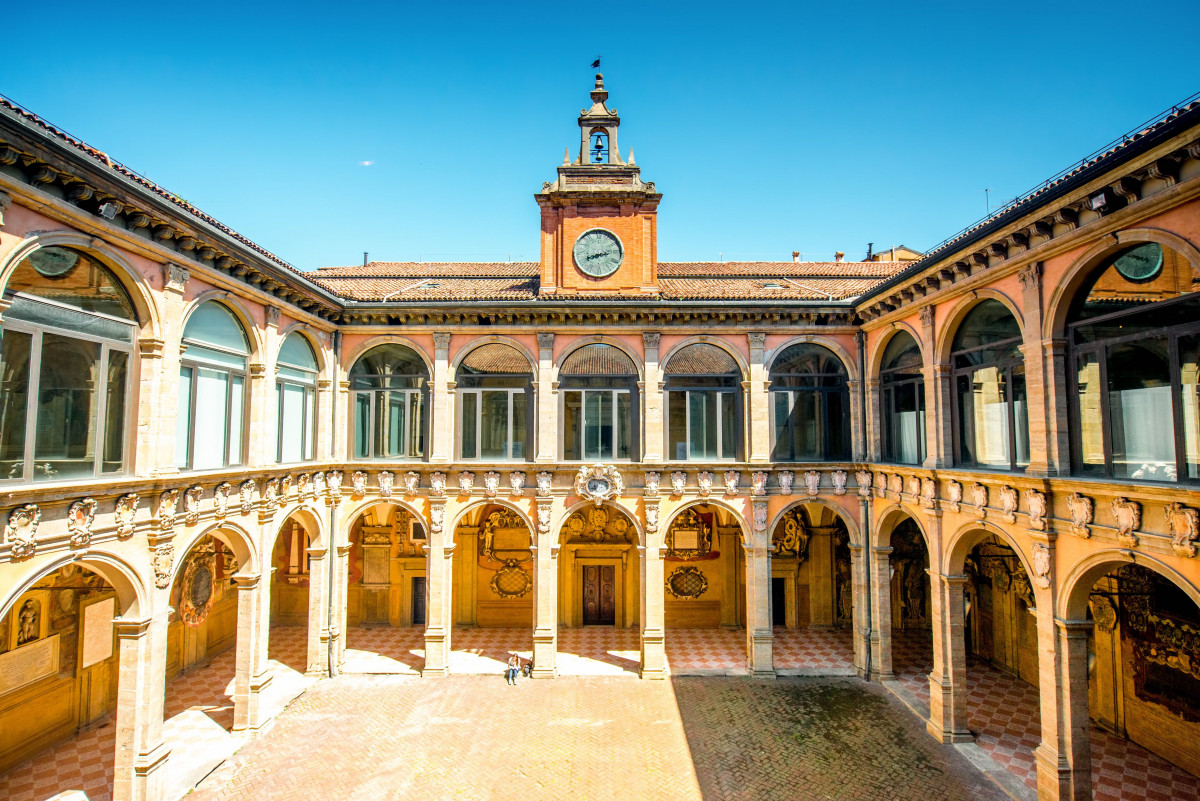The history of the Archiginnasio of Bologna
TheArchiginnasio di Bologna is one of the most significantbuildings of the city of Bologna: located in the heart of the historic center, it was the seat of the ancient University and is now home to the Municipal Library of the Archiginnasio. But what’s its story?
THE BUILDING
The construction of the Archiginnasio dates back to the sixteenth century, when the area of Piazza Maggiore was drastically restored at the behest of the Pope, in the same years in which the fountain of Neptune was also built. The realization was commissioned by Pope Pius IV through the Cardinal Legato Carlo Borromeo and his deputy Pier Donato Cesi, who assigned the project to Antonio Morandi (called the Terribilia), who finished the construction work between 1562 and 1563. The objective of the project was the creation of a unified place where university teaching related to the different disciplines, previously dispersed between different locations.
The Archiginnasio remained the seat of theStudium bolognese from the year of its inauguration (1563) until 1803.
TheArchiginnasio of Bologna is structured on two floors, with a front porch and the central courtyard with double order of loggias. In the middle of the courtyard, opposite the entrance, is the "Chapel of Santa Maria dei Bulgari", which owes its name to a church that stood in the "curia Bulgari", that is, at the houses of the famous Bulgarian jurist (12th century).
Among the main historical emergencies are the anatomical theater (which was built to a design by Antonio Levanti in 1637). This was a room dedicated to the study of the anatomy in the shape of an amphitheater, built of fir wood with a coffered ceiling, and decorated with statues, restored in the second post-war period after the American bombings of 1944 had heavily damaged it.
The chair, where the professor sat, is topped by a canopy held by two statues of naked men deprived of skin, called "the skinned", eighteenth-century work of Ercole Lelli. The numerous statues that decorate the walls represent doctors of antiquity and contemporaneity, in bust if considered minor figures, full-length if considered eminent luminaries. The two main statues, to the right of the entrance, depict Hippocrates and Galen, respectively the most important Greek physician and the most important Roman physician. An interesting statue, on the wall opposite the chair, depicts a doctor holding a nose in his hand: it is the Bolognese Gaspare Tagliacozzi, considered the precursor of rhinoplasty.
On the upper floor of the building there are also the ancient study rooms of the Register (civil and canon law) and of the Artists (philosophy, medicine, mathematics, physical and natural sciences). The Sala dello Stabat Mater and the Sala di Lettura of today’s Municipal Library are the main rooms.
The Sala dello Stabat Mater was so named in memory of the first national performance of the homonymous work by Gioachino Rossini held on 18 March 1842, conducted by Gaetano Donizetti. Both the lawyers and the artists had ten classrooms, but those of the lawyers were all arranged along the main corridor.
As evidence of the long university history of the palace has remained the largest mural heraldic complex in the world, currently composed of about 6000 (originally there were over 7000) student coats of arms and inscriptions in honor of professors. The complex fortunately saved itself from the destruction ordered by the Republican government in 1797 and from the bombings of the Second World War.
The building ceased its university function in 1803. Since 1838 it is home to the Municipal Library of the Archiginnasio, the largest in Emilia-Romagna, which preserves important texts in the historical, philosophical, political, literary and artistic disciplines, biographical and bibliographical and a developed section dedicated to the culture of Bologna. Among other things, the library holds about 35,000 manuscripts and incunabula.
Intrigued? Enter the Archiginnasio with our expert guides!



